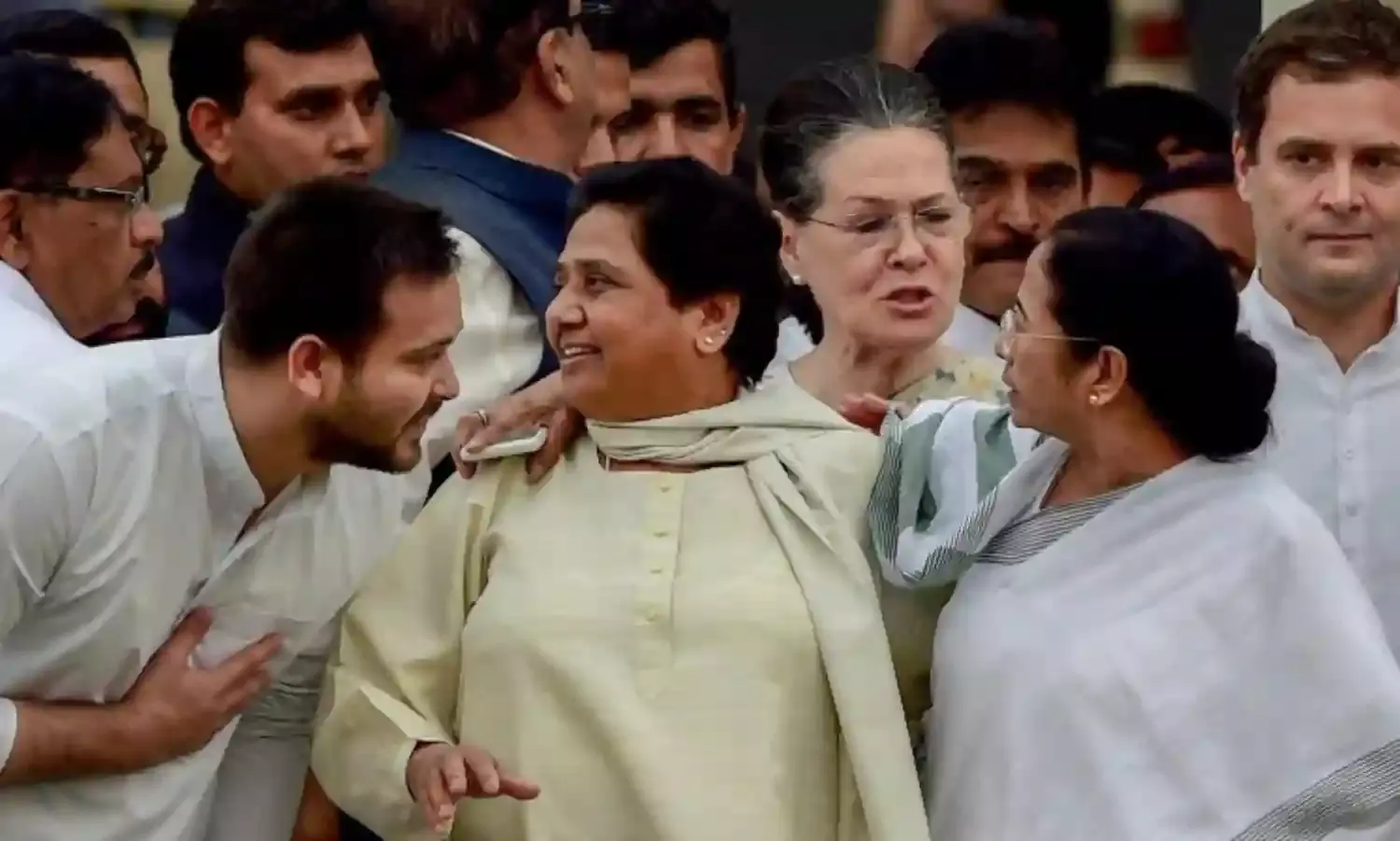Can Opposition Alliance Take on Modi-Shah?
Many questions that need answers
MUMBAI: At one point in HD Kumaraswamy’s swearing in ceremony in Bengaluru, all the important regional players, along with Sonia and Rahul Gandhi, lined up beside each other, held hands and raised them to the crowd, virtually telling Narendra Modi that the contest for 2019 is on.
But the common voter on the ground still seems sceptical of a coalition government. Will the regional leaders be able to work with each other in spite of their egos? Will the coalition be durable? These questions will not rest until the opposition releases a common ground, or a vision. Merely a vote against Modi wouldn’t be sufficient to persuade voters.
There are several examples of opposition unity in the history of Independent India. The first one was in 1967, where Sanyukta Vidhayak Dal, an alliance of Bharatiya Lok Dal, Socialists and Jan Sangh, even managed to form governments in some of the northern states. But internal conflict and Congress’ astute strategies meant it never got anywhere.
The Janata Party that displaced Indira Gandhi in 1977 riding the anger of Emergency, too, disintegrated after ego battles within. In between the two instances, in 1971, an anti Indira Gandhi formation, Badi Aghadi, evolved but it was devoured by her popularity.
Subsequently, in 1989, VP Singh, in the backdrop of Bofors, formed an anti-Congress government with the help of BJP and Left. But it collapsed in the battle of mandal-kamandal. In 1996 and 1997, Deve Gowda and Inder Kumar Gujral respectively formed minority governments with Congress support, which did not last long either.
Since then, we have not had a government in the last two decades without BJP or Congress at the centre, which raises questions on the sustainability of the anti-Modi alliance developing in India.
It is an open secret that it will not have one face. At the Kumaraswamy swearing in, all I could see were a number of Prime Minister hopefuls. Even though the Janata Party had not declared a face, the infuriation against Indira Gandhi had reached a kind of level where it didn’t really matter (Yet, the squabbles within the party after Jai Prakash Narayan declared Morarji Desai’s name as Prime Minister are well known). Whether the anger has reached similar levels today is the moot question.
To gauge if Modi’s juggernaut will suffer from the opposition coming together, Times of India ( May 24, 2018) tried to work out an arithmetic considering the vote percentage of each party. Except Uttar Pradesh, the study concluded, the BJP wouldn’t be hurt significantly in any other state, thereby, bringing its tally from 282 to 226. Still the single largest party, and favourites to form the government, considering the rubber stamp president we have currently, who would not mind taking inspiration from Vajubhai Vala.
The opposition alliance has thrown up several contradictions as well. Congress is directly in contest with KCR and Chandrababu Naidu in Telangana and Andhra respectively. It had tied up with the left to take on Mamata in Bengal, while engaging in fierce battle with the left in Kerala.
More importantly, the alliance can’t be successful only by arithmetic. It needs chemistry to compliment it. In Phulpur and Gorakhpur, we saw that when SP and BSP forged an alliance. The challenge would be to expand it for the entire state, and then the rest of the country. The Congress would have to sacrifice its ego and be ready to play second fiddle.
In the meantime, Modi and Shah would be more aware of the possibilities than anybody else. Yeddyurappa even tried to gather sympathy like Vajpayee by resigning before the floor test, but it obviously lacked morality. Nonetheless, the BJP would be keen to make an example out of the JDS-Congress alliance and portray it as a disaster.
It is not a surprise, therefore, that news of the alleged rift between two parties is already breaking on Godi Media. In that context, the functioning of this government holds huge significance ahead of 2019. Not many expect it to last five years. But the BJP will try everything it can to break the alliance ahead of 2019, or at least, create an illusion of it living on the edge, be it through social media or godi media.
The opposition, in fact, has several points it can counter Modi on. The widening rural-urban divide is something not many in the media have paid attention to. Farm distress, growing unemployment, lack of law and order, Dalit and minority persecution, failing economy…Modi, technically, has not delivered on any of his promises, while making things worse in a certain areas. The disillusionment is there.
The challenge for the opposition is to ensure the electorate carries it to the polling booth. Whether it is successful in doing so or not, is something nobody can say with certitude. But one thing we can say is the impending General Elections won’t be a lopsided affair.





